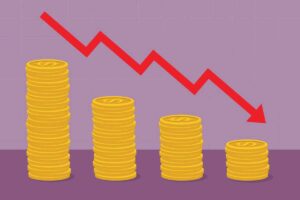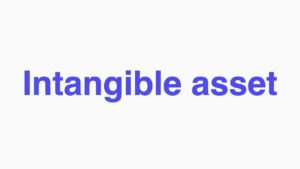Futures vs forwards: meaning, key differences and more

Futures and forwards are two types of financial contracts that allow investors to buy or sell an asset at a future date for a predetermined price. While these terms are often used interchangeably, there are important differences between them. In this article, we’ll explore the meaning of futures and forwards, the key features that distinguish them, and their applications in different markets.
Futures and forwards are financial contracts that allow investors to buy or sell an asset at a future date for a predetermined price. These contracts are commonly used by investors, traders, and businesses to manage their risks and exposure to different financial markets.
Meaning of futures
A futures contract is an agreement between two parties to buy or sell an underlying asset at a specific price and on a specific date in the future. The underlying asset could be a commodity, currency, stock index, or interest rate.
The futures contract is traded on an exchange, which acts as a central marketplace where buyers and sellers can come together to trade these contracts. Futures contracts are standardized in terms of the underlying asset, quantity, delivery date, and delivery location.
Meaning of forwards
A forward contract is an agreement between two parties to buy or sell an underlying asset at a specific price and on a specific date in the future. The underlying asset and terms of the contract are customized to meet the needs of the parties involved.
Unlike futures contracts, forward contracts are not traded over-the-counter (OTC) and are not standardized. This means that each contract can have different terms, such as quantity, delivery date, and delivery location.
Key differences
One key difference between futures and forwards is the way they are settled. Futures contracts are settled daily, which means that gains and losses are settled at the end of each trading day. This process is known as marking to market. On the other hand, forward contracts are settled only at the end of the contract term. This means that gains and losses are realized only when the contract is settled.
Another important difference between futures and forwards is the way they are priced. Futures contracts are priced based on the spot price of the underlying asset and the cost of carry. The cost of carry includes factors such as interest rates, storage costs, and insurance. This means that the futures price may be higher or lower than the spot price, depending on the cost of carry.
In contrast, forward contracts are priced based on the expected future spot price of the underlying asset. This means that the forward price may be higher or lower than the current spot price, depending on the expected future price movements.
Another difference between futures and forwards is the level of liquidity. Futures contracts are highly liquid, which means that they can be easily bought and sold on an exchange. This high level of liquidity makes it easy for investors and traders to enter and exit positions quickly.
In contrast, forward contracts are less liquid, which means that they may be harder to buy or sell. This is because forward contracts are customized to meet the needs of the parties involved, which can make it harder to find a buyer or seller with matching needs.
Finally, another key difference between futures and forwards is the margin requirements. Futures contracts require investors to deposit a certain amount of margin, which serves as collateral for the contract. The amount of margin required is determined by the exchange and varies depending on the underlying asset and the size of the contract. This margin requirement allows investors to trade futures contracts with leverage, which means that they can control a larger position with a smaller amount of capital.
In contrast, forward contracts do not require a margin, which means that investors do not have the same level of leverage. This can make it harder for smaller investors to enter into forward contracts, as they may not have the capital to meet the full obligations of the contract.
Applications in commodity markets
Futures and forwards are commonly used in commodity markets to manage risks and exposure to different commodities. Commodity producers, such as farmers, miners, and oil companies, use futures and forwards to hedge their production and protect against price fluctuations. For example, a farmer who expects to harvest a certain amount of corn in the future can use a futures contract to lock in a price for the corn, which protects them against the risk of falling prices. Similarly, an oil company can use a futures contract to lock in a price for their oil production, which protects them against the risk of falling prices.
Speculators also use futures and forwards in commodity markets to make bets on the direction of prices. Speculators can take a long position, which means they are betting on rising prices, or a short position, which means they are betting on falling prices. Speculators can profit from price movements without actually owning the underlying commodity.
While futures and forwards can be useful tools for managing risk and making speculative bets, they also carry risks. For example, commodity prices can be volatile, and unexpected price movements can lead to losses for investors. In addition, trading futures and forwards requires knowledge of the underlying commodity and the market, as well as the ability to manage risk and leverage effectively.
Trading futures: margin requirements and leverage
Futures trading requires investors to deposit a certain amount of margin, which serves as collateral for the contract. The amount of margin required varies depending on the underlying asset and the size of the contract. Futures contracts allow investors to trade with leverage, which means that they can control a larger position with a smaller amount of capital. This can amplify gains or losses, depending on the direction of the price movement.
For example, suppose an investor buys a futures contract for 100 barrels of crude oil for $60 per barrel, with a margin requirement of $5,000. The total value of the contract is $6,000 (100 barrels x $60 per barrel), but the investor only needs to deposit $5,000 in the margin. If the price of oil rises to $65 per barrel, the value of the contract would increase to $6,500, and the investor would make a profit of $500. However, if the price of oil falls to $55 per barrel, the value of the contract would decrease to $5,500, and the investor would incur a loss of $500.
It’s important to note that trading futures with leverage can also increase the risks of losses, especially if the market moves against the investor’s position. Investors must manage their risk carefully and have a clear understanding of the market and the underlying asset before trading futures.
Risks and rewards: pros and cons of investing in futures and forwards
Investing in futures and forwards can offer several benefits, such as the ability to manage risk and exposure to different markets, the potential for profit through speculation, and the flexibility to trade different assets. However, these contracts also carry risks, such as volatility, leverage, and counter-party risk.
One advantage of trading futures and forwards is the ability to manage risk and exposure to different markets. For example, an investor who is concerned about rising interest rates could use a futures contract to hedge their bond portfolio against the risk of falling prices. Similarly, an investor who is bullish on the stock market could use a futures contract to profit from
Another advantage of investing in futures and forwards is the flexibility to trade different assets, including commodities, currencies, and financial instruments. This allows investors to diversify their portfolios and take advantage of different market conditions.
However, investing in futures and forwards also carries risks. One major risk is volatility, as price movements in the underlying asset can lead to significant gains or losses. Leverage can also amplify these gains and losses, which can lead to substantial losses if not managed carefully. Additionally, investors are exposed to counter-party risk, which means that they may not receive their expected profits if the other party to the contract defaults.
Conclusion
Investing in futures and forwards requires careful consideration of the potential risks and rewards, as well as a solid understanding of the market and the underlying asset.
Investors must manage their risk carefully and have a clear trading strategy before investing in these contracts.
Don't miss a thing. Follow us on Telegram and Follow us on WhatsApp. If you love videos then also Subscribe to our YouTube Channel. We are on Twitter as MakeMoneyDotNG.





